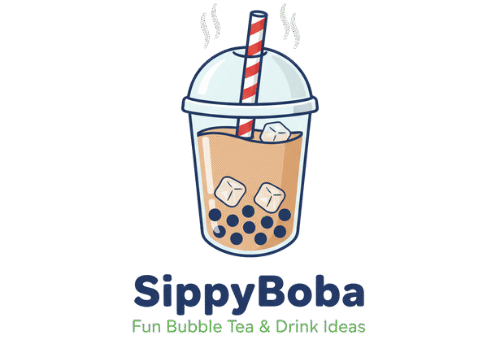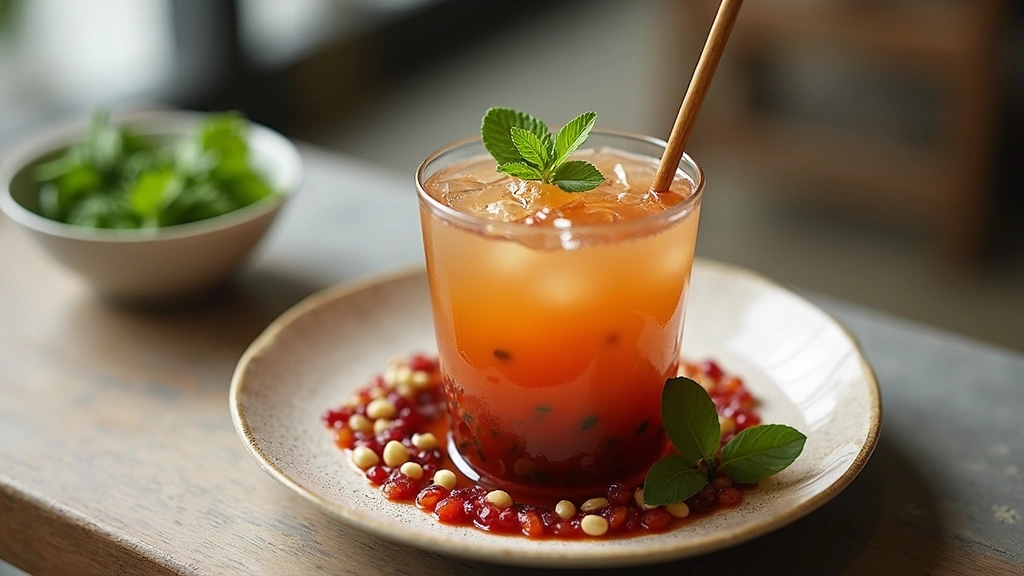Bubble tea, a delightful beverage with roots in Taiwan, has taken the world by storm with its unique textures and flavors.
The allure of bubble tea lies not just in the tea itself, but in the myriad of toppings that accompany it.
From chewy tapioca pearls to popping boba, each topping adds a unique layer of taste and texture.
Choosing the right toppings for your shop can elevate the customer experience and set your offerings apart.
Whether you’re catering to traditionalists or adventurers, understanding your options is key to success.
This guide will help you navigate the exciting world of bubble tea toppings.
The History and Cultural Significance
• How to Choose traces its origins to Taiwan in the 1980s, where bubble tea was originally created by blending milk tea with chewy tapioca pearls.
• The dish evolved over decades as new toppings like popping boba and jellies were introduced, eventually becoming the beloved version we know today.
• In Taiwanese culture, this drink traditionally appears at tea shops and social gatherings, symbolizing leisure and enjoyment.
• While many variations exist across different regions, the authentic version maintains the use of black tea and tapioca pearls that sets it apart from imitations.
Recipe Overview
Nutritional Information (per serving)
Essential Equipment Guide
Shaker: A shaker is crucial for properly mixing the tea and milk to achieve a smooth and frothy texture. Alternatives like a blender can work but may over-aerate the mixture. Look for one with a tight seal and a comfortable grip.
Bubble Tea Straws: These wide straws are essential for sipping both the tea and the larger toppings like tapioca pearls. Alternatives include wide-mouth spoons, but they lack the traditional experience.
Bubble Tea Cup Sealer: This tool is important for sealing the cup with a film, allowing for easy transport and a professional look. While lids can be used as an alternative, they do not provide the same aesthetic.
Ingredients
For the Base
|
|
| Amount | Ingredient | Notes |
|---|---|---|
| 2 cups | black tea | strongly brewed for robust flavor |
| 1 cup | milk | adds creaminess |
| 1/2 cup | sugar | sweetens the tea |
Toppings
| Amount | Ingredient | Notes |
|---|---|---|
| 1 cup | tapioca pearls | cooked, adds chewiness |
| 1 cup | fruit jelly | provides a refreshing contrast |
| 1 cup | popping boba | adds a burst of flavor |
Preparation Methods
Cooking Tapioca Pearls: This technique involves simmering the pearls until they reach the desired chewiness. It's crucial to stir frequently to prevent sticking and ensure even cooking.
Preparing the Tea: Properly brewing the tea involves steeping at the right temperature to extract maximum flavor without bitterness. Use fresh, high-quality leaves for best results.
Layering Toppings: Start with heavier toppings like tapioca pearls at the bottom, followed by lighter ones. This ensures even distribution and an appealing presentation.
Step 1: Prepare the Tapioca Pearls
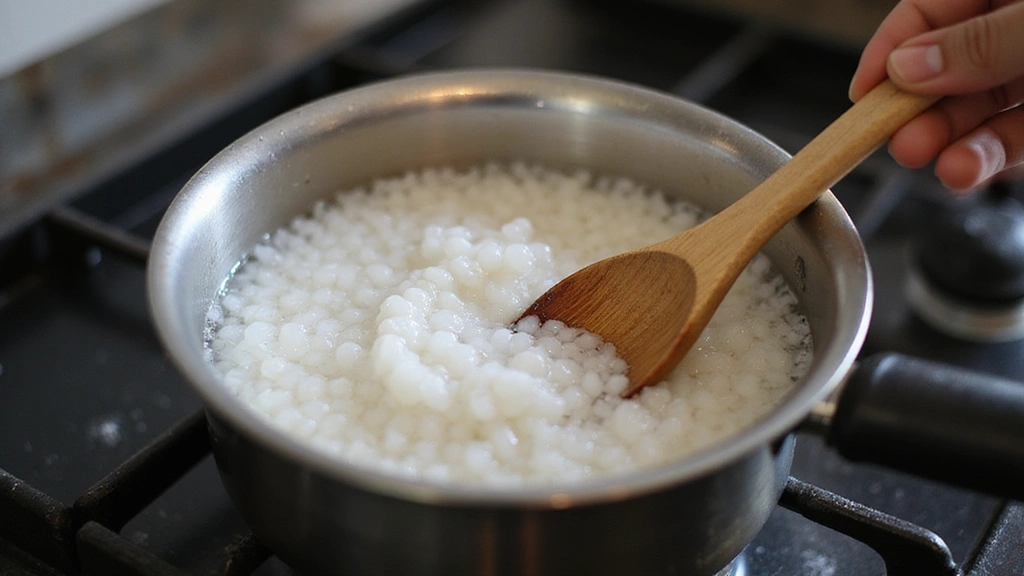
Start by bringing a pot of water to a boil.
Add the tapioca pearls, stirring to prevent them from sticking.
Simmer for 25-30 minutes until they are tender yet chewy.
Drain and rinse under cold water to stop the cooking process.
Step 2: Brew the Tea

Boil fresh water and pour it over the black tea leaves.
Let the tea steep for 5-7 minutes, depending on desired strength.
Strain the tea into a jug to remove the leaves.
Allow the tea to cool to room temperature.
Step 3: Sweeten the Tea
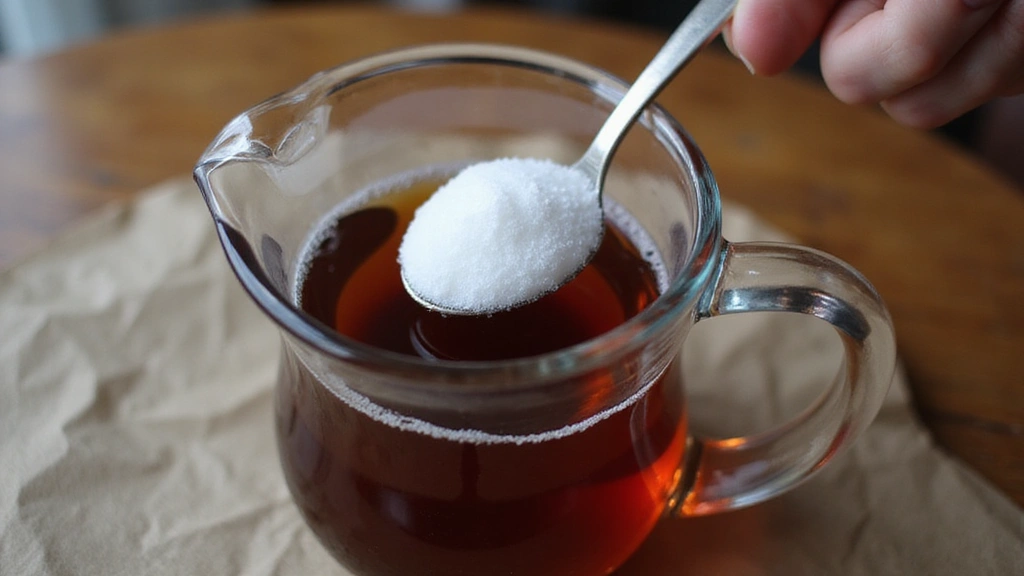
Add sugar to the warm tea, stirring until dissolved.
Adjust sweetness to taste by adding more or less sugar.
Cool the sweetened tea completely before proceeding.
Refrigerate if necessary to speed up the cooling process.
Step 4: Prepare the Milk
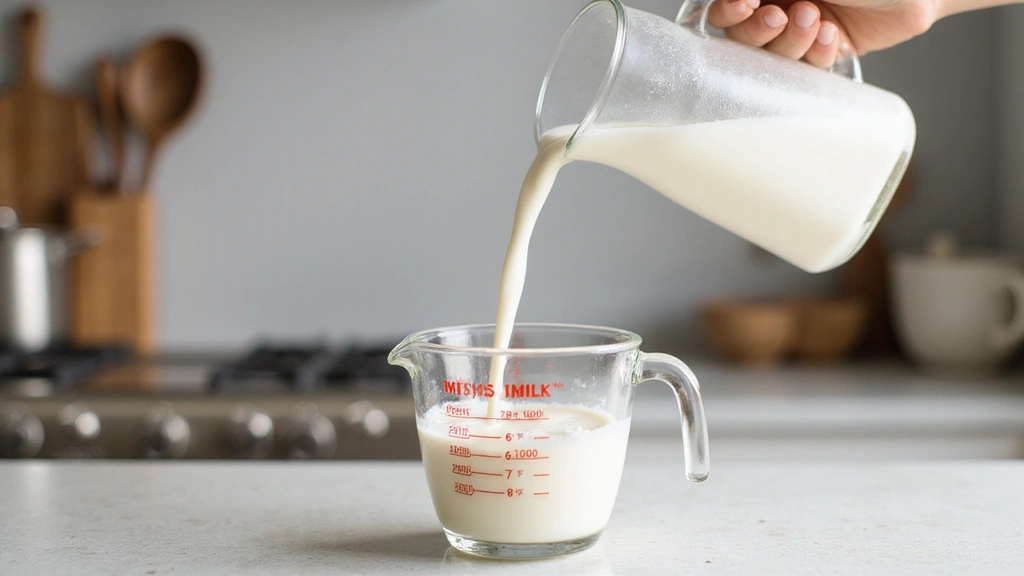
Choose your preferred type of milk, such as dairy or non-dairy.
Pour the milk into a separate jug or container.
Ensure the milk is cold for a refreshing final drink.
Keep it refrigerated until ready to use.
Step 5: Mix Tea and Milk

Combine the cooled tea and milk in a shaker.
Seal the shaker tightly to prevent spills.
Shake vigorously until well mixed and frothy.
Taste and adjust sweetness if necessary.
Step 6: Assemble the Drink
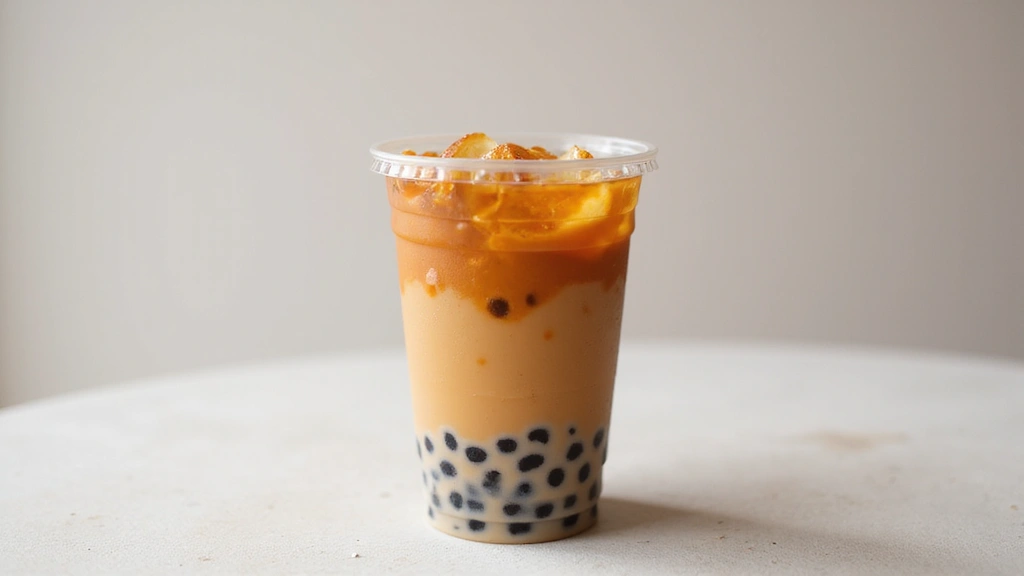
Add a layer of cooked tapioca pearls to the bottom of the cup.
Follow with a layer of fruit jelly or popping boba.
Pour the shaken tea mixture over the toppings.
Leave space at the top to avoid overflow.
Step 7: Seal the Cup

Place the cup under the bubble tea cup sealer.
Activate the machine to seal the cup with a plastic film.
Ensure the seal is tight to prevent leaks.
Check for any air bubbles or gaps.
Step 8: Serve and Enjoy
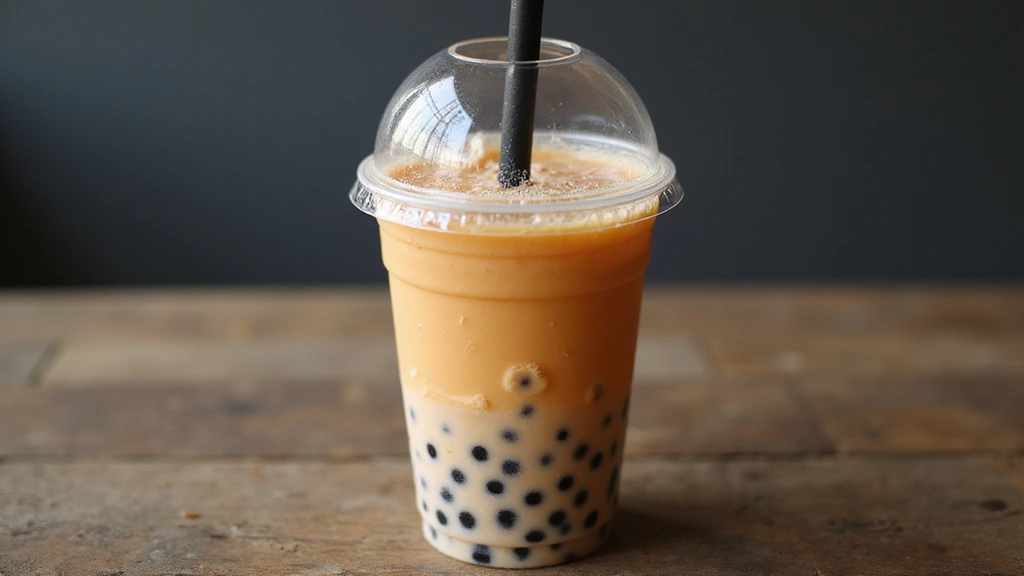
Insert a wide bubble tea straw through the sealed film.
Gently stir the drink to mix the layers if desired.
Serve immediately to enjoy the variety of flavors and textures.
Encourage customers to experiment with different toppings.
Critical Timing and Temperature Guide
Cooking Tapioca Pearls: Simmer for 25-30 minutes at medium heat. Look for a translucent appearance and chewy texture. Avoid overcooking, which can make them mushy.
Brewing Tea: Steep at 95°C for 5-7 minutes. Ensure the tea is a deep amber color. Over-steeping can cause bitterness.
Cooling Tea: Allow tea to cool at room temperature for 15-20 minutes. It should be cool to the touch before mixing. Rushed cooling can dilute the tea.
Pro Tips for How to Choose
• Ingredient Selection: Choose high-quality black tea leaves and fresh tapioca pearls. These ingredients significantly impact the final flavor and texture.
• Preparation Secret: Rinse tapioca pearls in cold water after cooking to achieve the perfect chewiness.
• Temperature Management: Ensure all ingredients are at the correct temperature before mixing for optimal flavor.
• Texture Enhancement: Use a shaker to create a creamy, frothy texture in the tea mixture.
• Flavor Layering: Combine contrasting toppings like fruit jelly and popping boba for a complex taste experience.
• Make-Ahead Strategies: Prepare tapioca pearls and tea in advance. Store pearls in sugar syrup to prevent hardening.
• Restaurant-Quality Finishing Touches: Use a bubble tea sealer for a professional look.
• Equipment Optimization: Use a cocktail shaker for optimal mixing.
Troubleshooting Common Issues
• Texture Too Dense: Overcooked tapioca pearls can become too dense. Reduce cooking time and rinse in cold water.
• Flavors Unbalanced: Adjust the sugar level in the tea if flavors seem off. Taste test before serving.
• Tea Too Bitter: This occurs from over-steeping. Use a timer and avoid squeezing the tea leaves.
• Seals Not Holding: Ensure the cup and sealer are clean and dry. Test the seal before serving.
• Toppings Sinking: Adjust the layering technique to ensure even distribution of toppings.
Variations and Regional Differences
• Taiwanese Style: Focus on classic tapioca pearls and black tea, with a stronger emphasis on traditional flavors.
• Japanese Style: Incorporate matcha tea and mochi toppings for a distinct twist.
• Korean Style: Use fruit-flavored teas and yogurt popping boba for a refreshing variation.
• Western Style: Experiment with flavored syrups and different types of milk for broader appeal.
Food Science Behind the Recipe
• Gelatinization of Tapioca Pearls: The cooking process involves gelatinization, where starch molecules absorb water, resulting in chewy pearls.
• Emulsification in Tea Mixing: Shaking tea and milk creates an emulsion, providing a creamy texture.
• Flavor Extraction in Tea Brewing: Proper steeping temperature and time optimize the extraction of polyphenols and flavor compounds.
Frequently Asked Questions
What's the most common mistake people make when preparing bubble tea? Overcooking tapioca pearls is a frequent issue, leading to a mushy texture. Proper timing is crucial.
How can I ensure my bubble tea is not too sweet? Start with less sugar and adjust gradually. Taste test after mixing.
Can I use any type of tea? While black tea is traditional, green and fruit teas are popular variations.
Why do my toppings settle at the bottom? Layering technique and density differences cause this. Stir gently before serving.
How do I keep tapioca pearls fresh? Store cooked pearls in a sugar syrup to maintain texture.
What's the best type of milk to use? Whole milk provides creaminess, but non-dairy alternatives work well too.
How can I make my bubble tea more visually appealing? Use colorful toppings and serve in transparent cups to showcase layers.
Serving and Presentation Guide
• Traditional Presentation: Serve in a clear cup with a wide straw, highlighting the layers and colors.
• Modern Presentation: Use mason jars or glass bottles for a trendy look.
• Event Presentation: Serve in mini cup samples for tasting events or parties.
• Child-Friendly Presentation: Use colorful straws and add fun-shaped jellies.
Conclusion
Choosing the perfect bubble tea toppings can transform a simple drink into a memorable experience.
With this guide, you'll be able to impress customers with a wide range of flavors and textures.
Experiment with different combinations to find the perfect blend for your shop.
Start exploring the world of bubble tea toppings and elevate your menu today.
